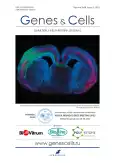Neuroelectronics as neuromorphic and neurohybryd systems enabled by memristive technology
- Authors: Mikhaylov A.N.1
-
Affiliations:
- National Research Lobachevsky State University of Nizhny Novgorod
- Issue: Vol 18, No 4 (2023)
- Pages: 825-826
- Section: Conference proceedings
- URL: https://journal-vniispk.ru/2313-1829/article/view/256348
- DOI: https://doi.org/10.17816/gc623426
- ID: 256348
Cite item
Abstract
Due to its distinctive capability to replicate vital functions of synapses and neurons, memristive devices and arrays enable both the hardware implementation of neural networks and a significant advancement towards integrating artificial electronic and biological systems to address pressing issues in artificial intelligence (AI), robotics, and medicine. This research area is still nascent and can be viewed as part of the broader field of neuroelectronics. The aforementioned is a fusion of analog and digital solutions used for diverse computational tasks inspired by biology. Notably, analog neuromorphic systems that employ memristive components are distinctive features of this arena and they can significantly enhance throughput and energy efficiency in contrast to existing AI accelerators. Designing neuromorphic systems grounded on this fresh component base mandates coordinated and interdisciplinary research and development. The foundation of this scientific and technological field lies in the cross-cutting technology of memristive devices and circuits. This technology enables the development of a novel brain-like information and computing system infrastructure that can be applied in a diverse range of fields. Current perspectives include the seamless integration of memristive devices and arrays with CMOS circuits, and the co-optimization of materials, devices, and architectures to create prototypes for computing and information systems. These systems replicate computational features present in biological neural networks capable of solving cognitive tasks that are typically either intractable by traditional AI or highly time-consuming. Neuroelectronic solutions can integrate with the brain or living neuronal cultures to form neurohybrid systems. In this presentation, we discuss two distinct strategies for connecting memristive systems with biological neural networks both in vitro and in vivo. These include a perceptron using an array of programmable memristive weights represented by metal-oxide resistive-switching devices and a methodology leveraging memristive stochastic plasticity and neural synchrony, which is part of the brain’s spiking architecture. Finally, the concept of a memristive neurohybrid chip is presented to create a compact, multifunctional, bidirectional interface between biological neural networks and memristive electronics, combined with microelectrode and microfluidic systems on a single chip. The technological advancements in component base and the development of memristor-based neuroelectronic systems will diversify hardware for the continuous evolution and mass application of artificial intelligence technologies. This will enable the creation of hybrid intelligence based on the symbiosis of artificial and biological neural networks and allow for the establishment of novel tasks at an unprecedented level.
Full Text
Due to its distinctive capability to replicate vital functions of synapses and neurons, memristive devices and arrays enable both the hardware implementation of neural networks and a significant advancement towards integrating artificial electronic and biological systems to address pressing issues in artificial intelligence (AI), robotics, and medicine. This research area is still nascent and can be viewed as part of the broader field of neuroelectronics. The aforementioned is a fusion of analog and digital solutions used for diverse computational tasks inspired by biology. Notably, analog neuromorphic systems that employ memristive components are distinctive features of this arena and they can significantly enhance throughput and energy efficiency in contrast to existing AI accelerators. Designing neuromorphic systems grounded on this fresh component base mandates coordinated and interdisciplinary research and development. The foundation of this scientific and technological field lies in the cross-cutting technology of memristive devices and circuits. This technology enables the development of a novel brain-like information and computing system infrastructure that can be applied in a diverse range of fields. Current perspectives include the seamless integration of memristive devices and arrays with CMOS circuits, and the co-optimization of materials, devices, and architectures to create prototypes for computing and information systems. These systems replicate computational features present in biological neural networks capable of solving cognitive tasks that are typically either intractable by traditional AI or highly time-consuming. Neuroelectronic solutions can integrate with the brain or living neuronal cultures to form neurohybrid systems. In this presentation, we discuss two distinct strategies for connecting memristive systems with biological neural networks both in vitro and in vivo. These include a perceptron using an array of programmable memristive weights represented by metal-oxide resistive-switching devices and a methodology leveraging memristive stochastic plasticity and neural synchrony, which is part of the brain’s spiking architecture. Finally, the concept of a memristive neurohybrid chip is presented to create a compact, multifunctional, bidirectional interface between biological neural networks and memristive electronics, combined with microelectrode and microfluidic systems on a single chip. The technological advancements in component base and the development of memristor-based neuroelectronic systems will diversify hardware for the continuous evolution and mass application of artificial intelligence technologies. This will enable the creation of hybrid intelligence based on the symbiosis of artificial and biological neural networks and allow for the establishment of novel tasks at an unprecedented level.
ADDITIONAL INFORMATION
Funding sources. This study was conducted within the framework of the scientific program of the National Center for Physics and Mathematics, section 9 “Artificial Intelligence and Big Data in Technical, Industrial, Natural and Social Systems”.
Competing interests. The author declares that he has no competing interests.
About the authors
A. N. Mikhaylov
National Research Lobachevsky State University of Nizhny Novgorod
Author for correspondence.
Email: mian@nifti.unn.ru
Russian Federation, Nizhny Novgorod
References
Supplementary files









